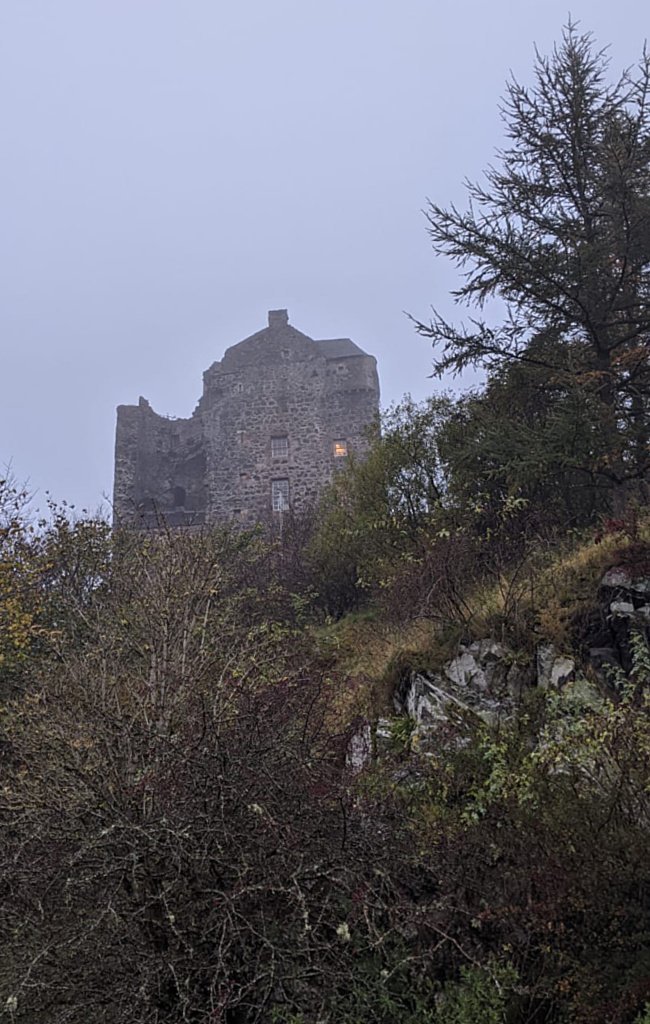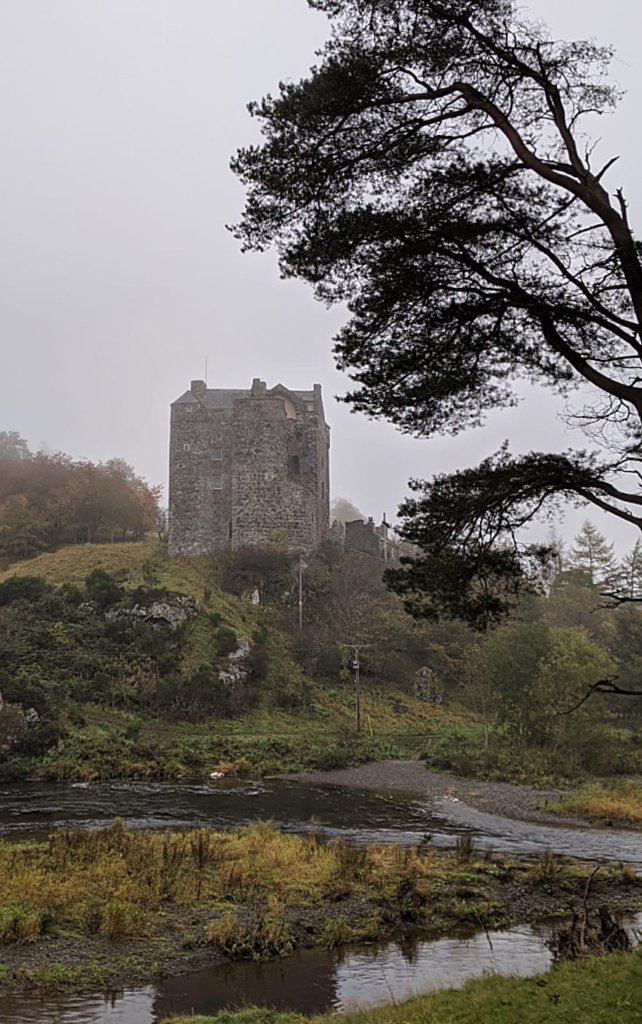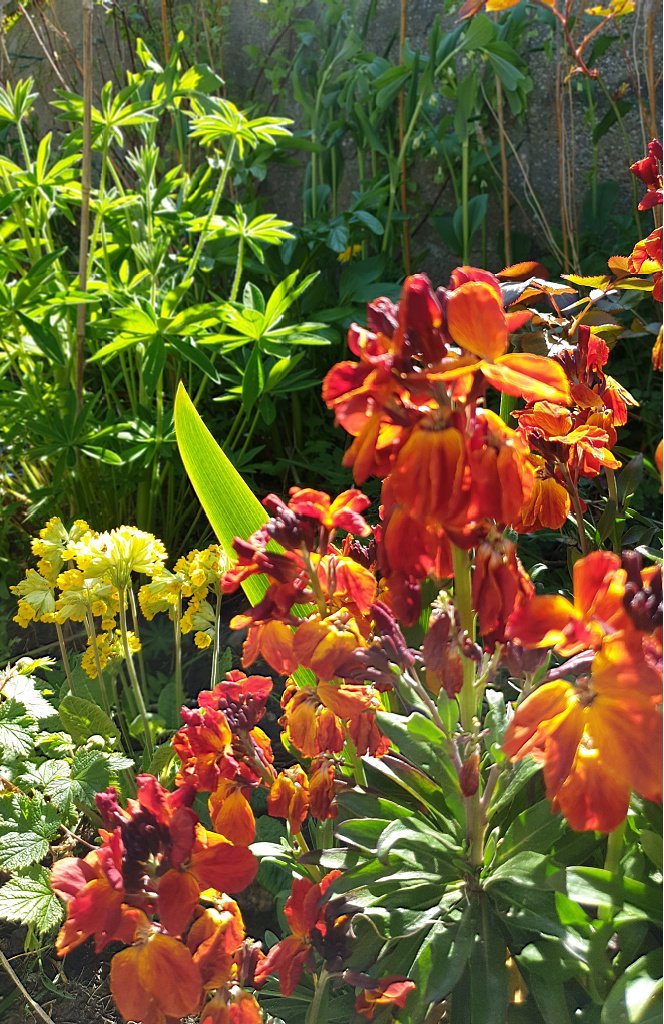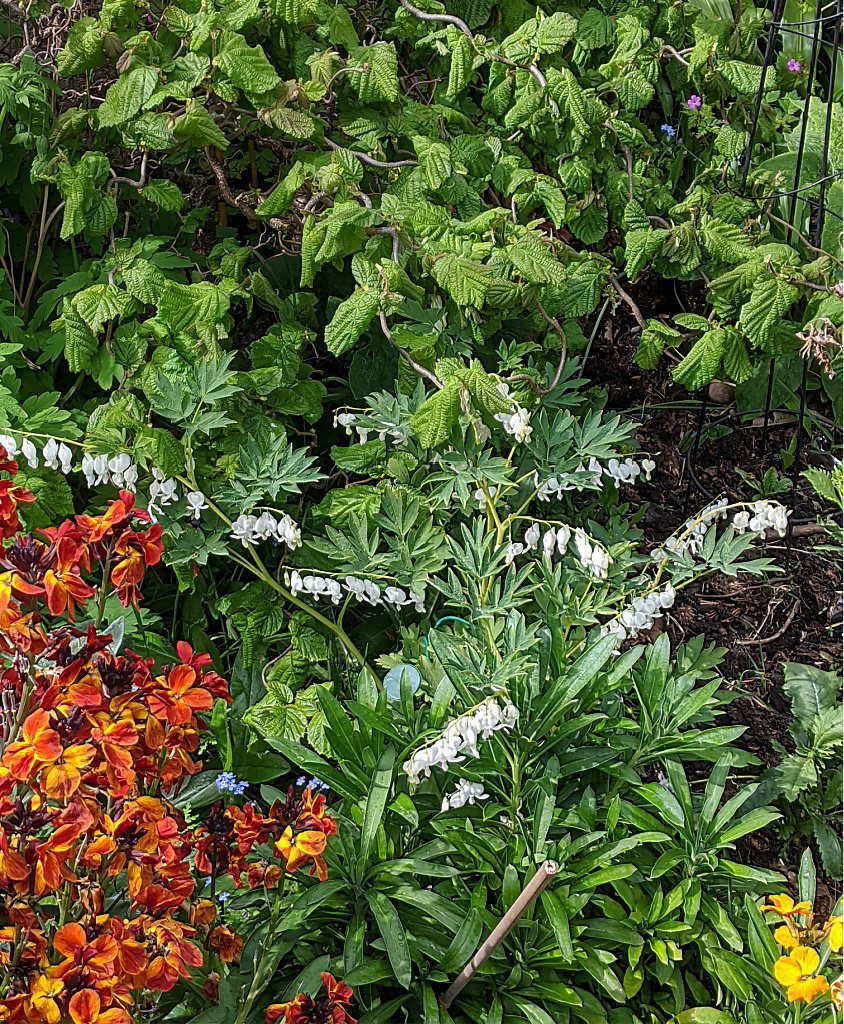Wallflower is rich in folk-lore
Before we go all horticultural, let me tell you a story, as an example of the folklore associated with wallflower. (“Draws up chair and invites his listeners closer.”)
Neidpath Castle sits high on a grassy knowe above the Tweed near Peebles, an easy Sunday afternoon’s excursion from the city of Edinburgh.
Just like all these other strongholds in the Scottish Border lands, it has tales and legends attached to it.

The Maid of Neidpath
One story is told about Elizabeth, the Maid of Neidpath, who lived in the castle with her ambitious father, the Earl of March.
Her dad wanted her to marry King King Robert III of Scotland. (This was back in the 14th century.)
Instead, she fell for Scott of Tushielaw, the son of a Border chieftain. By the way, this makes him an ancestor of the famous(?) Adam Scott, ‘The King of Thieves’.
His beat was the Ettrick Valley. He was captured and, hung by King James V’s men in 1529.
Oh, wait, let’s stick to this tale. We haven’t even reached the wallflower connection yet.
So, anyhoo, as nothing less than marrying a Scottish monarch had been deemed appropriate by dad, he did what all pushy parents in balladry and stories did back then: he locked her in the castle.
The Wandering Minstrel – a folk-tale stock figure
The love-struck young Scott of Tushielaw thought of a plan to rescue her. First he started a rumour that he had gone off to foreign wars. Then he disguised himself as a wandering minstrel.
It was a stock disguise from a limited choice, as gorilla suits had not yet been invented.
He came to the Castle and sang a song below her window. The words of the song were all about a couple whose love overcame all obstacles and who escaped together one night when the moorcock called.
Complicated lyrics and deaf fathers were the norm in those days.
Sure enough, Neidpath Liz got the gist of the ditty and, pulling a bit of wallflower from the wall nearby, she dropped the sprig of down to him as a token that she would be waiting at nightfall.
(Dramatic pause as narrator relights his pipe and loads another picture into the photo library…)

However, their plan went badly wrong. That night she heard her suitor make the appropriate and pre-arranged bird call.
When the moorcock calls. What? Why?
Wait. Been thinking about this and need to be practical for a moment. Obviously, to choose an owl call would have been silly, because the place would have been full of hoolets back then.
However, the chosen bird, the moorcock, commonly, the red grouse, is notable for making a distinct call that sounds like ‘go-back, go-back, go-back’.
As this is the exact opposite of what he wanted her to do, it surely would have led to confusion.
So, it seems more likely that in reality they would have used something more recognisable and unique.
OK, let’s say they agreed that as soon as she heard her boyfriend make the the call of the Laysan Honeycreeper (now extinct) she would climb over the parapet.
Tragically on the night, in her haste, the rope she used to descend to the courtyard came unfastened. (Maybe she had tied it to a wallflower.) She was killed. Bit of a downer, so to speak.
Broken-hearted, the young man gave up his career in cattle-stealing and bothering Ettrick folk on Saturday nights. Instead, he wandered all over Europe, gaining fame as a minstrel.
He obviously took a real liking to the disguise and always wore a sprig of wallflower in his bunnet.
Other strolling players adopted the wallflower badge as a symbol of constancy to their girl back home. Romantic, eh?
Can we get on to wallflower now, please?
Five hundred years later, the colourful wallflower is still one the great delights of spring time. The plant originally came from the cliffs of the Mediterranean, but has been cultivated for so long that nobody knows how it arrived.
It could even have come in with the Romans or with pilgrims of long ago. Perhaps its seeds were attached to some imported stone.

As it adapts easily to parched and rocky soils, it soon escaped from gardens and took to castle and monastery walls quite readily.
You can see it on the Castle Rock at Edinburgh or on the steep rocks behind St Andrews House, also in the capital, as just two examples of old and historic places.
(Hmm. I’m assailed by doubts now. Och, the plant is sure to be still there. Let me check in the spring and get back to you.)

In the wild, wallflower has four large yellow petals, just like the commonest garden types.
As well as the straightforward yellow, there are plenty of more exotically coloured varieties available in single and double form, ranging from pale primrose yellow right through to deep maroon and parti-coloured types as well.
Raising wallflower
Wallflowers are, strictly speaking, biennial. If you want good plants you could sow outdoors and then transfer to flowering positions in the autumn.
Once into their flowering site they hang on for years, getting scrawnier with each succeeding season and also sending seedlings to colonise other places. Fortunately, cuttings root easily.
They were traditionally associated with tulips, as part of the colourful show in the spring border. They’re a bit unfashionable at the moment as well. I think the very best thing about them is their scent, so you could try a clump beside the door.
If you don’t like their leggy tendencies, then choose some of the dwarf forms or go for Cheiranthus x allionii, the Siberian wallflower, which is shorter growing, in the sense pf being stockier.
Alternatively, hunt up its close cousin Erysimum alpinum, a sort of low growing up-market wallflower, good in rock gardens.

Finally, you noticed…it looks like Cheiranthus and Erysimum are more or less interchangeable. Let’s just say wallflower.
